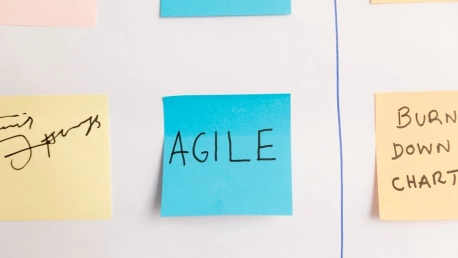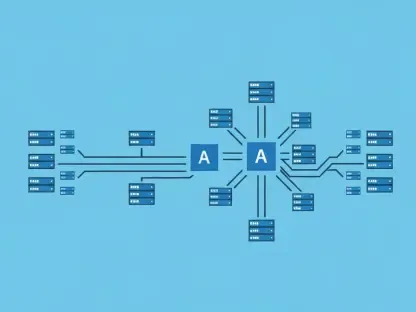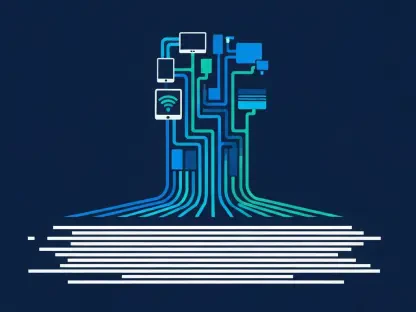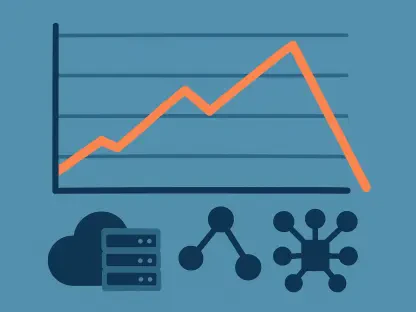In today’s dynamic and fast-paced business environment, managing projects efficiently while maintaining flexibility is more crucial than ever. Traditional project management methodologies often fall short in accommodating the fluid nature of modern business needs. This has paved the way for hybrid approaches like Scrumfall, which blend the rigor of Waterfall with the adaptability of Agile Scrum. But is Scrumfall truly the future of hybrid project management methodologies? This article dives deep into understanding Scrumfall, examining its benefits, challenges, and potential as the next big thing in project management.
Understanding Scrumfall
Defining Scrumfall
Scrumfall, or Water-Scrum-Fall, is a hybrid project management methodology that incorporates the structured planning and documentation phases of the Waterfall model with the iterative, collaborative, and adaptive cycles of Scrum. This hybrid approach aims to offer the best of both worlds by aligning project requirements, timelines, and budget constraints upfront while allowing iterative development and continuous improvement throughout the project lifecycle. Scrumfall begins with a detailed planning phase like in Waterfall, where significant upfront efforts are invested in defining project scope, timelines, and resource allocation. Once this foundational planning is completed, the project transitions into Scrum-based sprints, facilitating iterative development and regular feedback loops. This dual-phased approach strives to balance the need for initial structured planning with the benefits of agile responsiveness to change.
The Mechanics of Scrumfall
The structured planning phase lays out clear project objectives, assigns responsibilities, and delineates milestones. This phase often involves creating comprehensive documentation, risk assessments, and detailed budget plans. The subsequent Scrum sprints focus on development activities, employing short, repetitive cycles that prioritize flexibility and customer feedback. Teams work collaboratively during these sprints, concentrating on achieving incremental project goals. In essence, Scrumfall attempts to combine the predictability and clarity of Waterfall with the dynamism and customer-centric approach of Scrum. While this hybrid methodology offers a robust framework, it also introduces a unique set of challenges and operational nuances that organizations must navigate effectively.
The Rise of Hybrid Project Management
Increasing Popularity and Adoption Rates
The push towards hybrid methodologies such as Scrumfall is not merely a trend but a response to evolving project demands and organizational complexities. According to the Project Management Institute’s Pulse of the Profession 2024 survey, the adoption rate of hybrid project management approaches has surged from 20% in 2020 to 31% in 2024. This shift is indicative of a growing recognition of the limitations of purely traditional or purely Agile methods in handling modern project intricacies. Organizations are increasingly seeking methodologies that offer the predictability of structured planning while retaining the flexibility to pivot as project requirements evolve. Scrumfall surfaces as an attractive option, promising a balanced approach to project management that can adapt to diverse project needs and dynamic business environments.
The Debate Among Professionals
Despite its rising adoption, Scrumfall commands a divided opinion among project management professionals. Platforms like Reddit and Quora reveal a notable split, with purists favoring either traditional or fully Agile methods. Some practitioners argue that reverting to Waterfall elements undermines the core principles of Agile, while others see hybrid models as a pragmatic solution for achieving more controlled project delivery. Proponents of Scrumfall emphasize its ability to provide structured control and defined scope management, often seen as shortcomings in pure Agile methodologies. Conversely, critics argue that any reintroduction of Waterfall elements could potentially reintroduce constraints that impede rapid iteration and adaptability.
Comparing Methodologies
Waterfall vs. Scrum
Waterfall and Scrum represent two ends of the project management spectrum. Waterfall is a linear, phase-based methodology characterized by its structured, sequential approach—each phase must be completed before moving on to the next. This model excels in environments where project requirements are well understood and static, but its rigidity makes it difficult to adapt to changes once the project is underway. Scrum, on the other hand, is an Agile methodology that emphasizes flexibility, iterative development, customer collaboration, and responsiveness to change. Projects are divided into short cycles called sprints, allowing teams to adapt quickly based on feedback and evolving requirements. Scrum’s adaptability is a significant advantage, but it can sometimes lead to project scope creep and lack of long-term planning.
Integrating Waterfall and Scrum: The Essence of Scrumfall
Scrumfall seeks to combine the strengths of both methodologies by starting with a robust planning phase that sets clear expectations and constraints, followed by iterative development stages that allow for flexibility and ongoing refinements. This integration provides a structured roadmap while enabling teams to adjust and improve based on continuous feedback. By bridging the gap between Waterfall’s predictability and Scrum’s adaptability, Scrumfall offers a middle ground, catering to projects that require initial detailed planning but also benefit from iterative progress. The hybrid model aims to reduce the downsides associated with each method when used independently.
Advantages of Scrumfall
Structured Planning and Risk Management
One of the standout advantages of Scrumfall is its structured upfront planning, which helps in outlining project scope, timelines, and resource allocation. By investing in detailed planning at the start, teams can identify potential risks and develop strategies to mitigate them early on. This level of preparation ensures that projects stay on track and within budget, reducing the chances of unexpected delays and cost overruns. Additionally, the comprehensive documentation created during this phase serves as a valuable reference throughout the project, providing clarity and direction for all team members involved.Another significant benefit of Scrumfall is its ability to improve communication and collaboration among team members. The initial planning phase clearly defines roles and responsibilities, often using tools like RACI charts to ensure everyone knows who to contact for specific issues. This structured approach to communication helps prevent misunderstandings and fosters a more cohesive working environment. As the project progresses into the Scrum-based iterative cycles, regular feedback loops and collaborative work sessions further enhance team dynamics and ensure that everyone stays aligned with project goals.
Flexibility and Continuous Improvement
Scrumfall’s hybrid nature allows it to leverage the strengths of Agile methodologies by incorporating iterative development cycles. These cycles, known as sprints, enable teams to work on small, manageable chunks of the project, making it easier to accommodate changes and improvements as they arise. This iterative approach also promotes continuous feedback from stakeholders, ensuring that the final product aligns closely with their expectations. By integrating customer feedback at regular intervals, Scrumfall minimizes the risk of customer dissatisfaction and increases the likelihood of delivering a product that meets or exceeds client needs.Furthermore, Scrumfall supports a culture of continuous improvement by encouraging teams to reflect on their performance at the end of each sprint. These retrospectives provide an opportunity to identify areas for improvement, celebrate successes, and implement changes that enhance future performance. By fostering a mindset of constant learning and adaptation, Scrumfall helps teams become more resilient and better equipped to handle the complexities of modern project management. This ongoing process of refinement enables organizations to stay competitive in a rapidly evolving business landscape, making Scrumfall an attractive option for those looking to balance structure and flexibility.
Challenges and Considerations
Recruitment and Expertise
While Scrumfall offers numerous benefits, it also presents some challenges that organizations must address to fully capitalize on its potential. One such challenge is the need for project managers who possess expertise in both traditional and Agile methodologies. These professionals must be adept at navigating the structured planning phases of Waterfall while also embracing the iterative, collaborative nature of Scrum. However, finding individuals with this unique skill set can be difficult, and those who do possess such expertise often command higher salaries. This can lead to increased recruitment costs and potential challenges in assembling a well-rounded project management team.
Decision-Making and Stakeholder Interaction
Another challenge associated with Scrumfall is the potential for delayed decision-making due to its centralized approach. While having a clear decision-making hierarchy can provide much-needed control and consistency, it can also slow down critical project decisions, particularly in the fast-paced world of software development. This can result in longer delivery timelines and decreased agility, which may undermine some of the key benefits that Agile methodologies aim to provide.In addition to decision-making, the level of stakeholder interaction in Scrumfall can also pose challenges. The structured planning phase may limit direct interaction between development teams and stakeholders, which can lead to misunderstandings and misaligned expectations. While regular feedback loops during the Scrum sprints help mitigate this risk, they may not entirely eliminate the possibility of delivering a product that falls short of client requirements. Therefore, organizations adopting Scrumfall must implement additional checks and balances to ensure stakeholder alignment throughout the project’s lifecycle.
Conclusion: The Potential of Scrumfall
In today’s rapidly evolving business landscape, the need for efficient project management that also allows for flexibility is more critical than ever. Traditional project management methods often fall short in addressing the ever-changing demands of contemporary business settings. This shortfall has led to the rise of hybrid methodologies like Scrumfall, which combines the structured phases of Waterfall with the adaptive, iterative approach of Agile Scrum.But is Scrumfall really the future of hybrid project management? This article explores the core principles of Scrumfall, delving into its benefits, challenges, and overall potential as an innovative project management strategy. By integrating the detailed planning and stage-gate process of Waterfall with the flexibility and responsive innovation of Scrum, Scrumfall aims to offer the best of both worlds.Scrumfall presents several advantages, including improved adaptability, increased team collaboration, and more efficient use of resources. However, it also comes with its own set of challenges, such as the need for skilled practitioners who can navigate both methodologies seamlessly. As businesses continue to seek more cohesive and adaptable project management solutions, the potential of Scrumfall to become a cornerstone in project management grows. Therefore, understanding Scrumfall’s strengths and limitations is imperative for organizations aiming to stay competitive and innovative in a fast-paced world.









